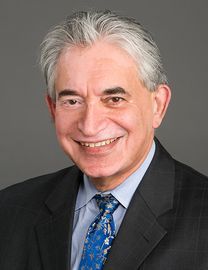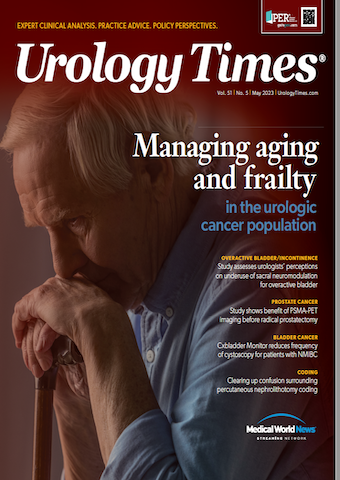Publication
Article
Urology Times Journal
The perils of GME from the faculty point of view
Author(s):
"The need for maintaining the high quality of education within the increasing number of restrictions and regulations is making the job as program director complex and time-consuming," writes Gopal H. Badlani, MD.
Gopal H. Badlani, MD

Life is returning to normal again, with the ending of mask mandates and the return of in-person urology meetings. It seems like I am reacquiring long-lost friends and colleagues. It’s been almost 3 years since we collectively decided to stay away from each other and/or wear a barrier of a mask while in the same confines. I so much appreciate the smiles and recognition of individuals now at the meetings and at work.
At a recent scientific meeting, I attended a panel discussion on the topic of graduate medical education (GME) and residency, and in this article, I’ll paraphrase their presentations and the discussions that followed. Many in attendance were program directors and leaders in the field. The moderators were John D. McConnell, MD, from Atrium Health Wake Forest Baptist in Winston-Salem, North Carolina; Jay Raman, MD, from Penn State Health Milton S. Hershey Medical Center in Pennsylvania; and Juan Palou Redorta, MD, PhD, FEBU, FRCS (Glas), from Universitat Autònoma de Barcelona in Spain. The topics and presenters included the following:
• Is there a need for diversity and inclusion? Presented by Arthur L. Burnett II, MD, MBA
• Personal time off, does it affect the learner’s training & the program? Presented by E. Ann Gormley, MD, MSc
• Is there a need for new ways to assess resident candidates? Presented by Louis R. Kavoussi, MD, MBA
• Lack of adequate open surgery, should it be a concern? Presented by Victor W. Nitti, MD
• Is integrating global health opportunities for learners worthwhile? Presented by Joseph A. Smith Jr, MD
• EAU role in GME or is each country its own model? Presented by Juan Palou, MD, PhD, FEBU, FRCS (Glas)
• How is AUA addressing this? Jay Raman, MD
According to a press release from the AUA,1 2022 was a record-breaking year for the Urology Residency Match. Of the more than 600 students who registered in this year’s urology match—the highest number in nearly a decade—92.5% submitted preference lists for this highly competitive program, vying for a record-high of 365 positions across the country. When the matching algorithm was processed, 66% matched to a vacancy within 143 registered and accredited training programs within the United States, leaving 0 vacancies unmatched.
This year’s urology match was also a paramount year for women applying for and matching with urology programs, as a higher percentage of female participants matched with programs (72%) compared with their male counterparts (63%). Of all matched applicants, 5.7% are Black or African American, and 11.5% are Latino, Hispanic, or of Spanish origin, which is an increase over the 7.4% of matched applicants who identified as Latino, Hispanic, or of Spanish origin in 2022.
The American Board of Urology (ABU) and the Accreditation Council for Graduate Medical Education (ACGME) have modified the leave policy to allow for maternity and paternity time off so as to not affect the graduating requirements from a urology program. The difficulty of managing rotations when more than 1 resident is away for a prolonged period was discussed. The effect of involving the residents in problem-solving was an effective tool.
The biggest dilemma coming in the future is the ability to select candidates without board scores and grades. The remote interview on platforms like Zoom has become a reality. Further restriction on lack of candidate image, ethnicity with intent to improve diversity were seen as barriers rather than help to address these issues.Skill testing and an entry exam, which is a norm in some countries, were seen as possible solutions.
Are distribution of minimum number of case requirements and an overall reduction in open cases are trends that have been present for many years. The 2 years of general surgery as a prerequisite has declined to 9 months of non-urology months in the intern year, which is now a part of urology training. Simulation and reconstructive surgery in men’s and women’s health and pediatric urology remain the core of open surgical skills, as oncologic surgery has been dominated by the use of advanced technology. Global health is not a solution for such training, as the mentors there wish to train the local surgeons to provide ongoing care. However, these training opportunities improve the ability to perform in resource-poor situations, and assisting in a large number of cases within a short period is invaluable. Currently, these cases done outside the program do not count toward the residency log for ACGME.
European education varies by country and is not uniform. The 2-tier system in certain countries—training only a portion of the learners as operating/academic surgeons and the rest as office-based urologists—was discussed. It has been debated in the past, but the general consensus has been against such training in the United States.
The fact that urology as a specialty attracts a high number of top-tier applicants, that the graduating residents’ pass rate at the ABU exam is high, and that graduates are recruited to open positions easily were all brought up in discussion. However, the need for maintaining the high quality of education within the increasing number of restrictions and regulations is making the job as program director complex and time-consuming.
I will close with a quote from First Lady Jill Biden, EdD: “Education teaches us compassion and kindness, connection to others.” So my kudos to the program directors and educators in urology.
Reference
1. Hundreds of future urologists celebrate Match Day 2023. News release. American Urological Association. February 2, 2023. Accessed April 11, 2023. http://bit.ly/3zMobcI





























